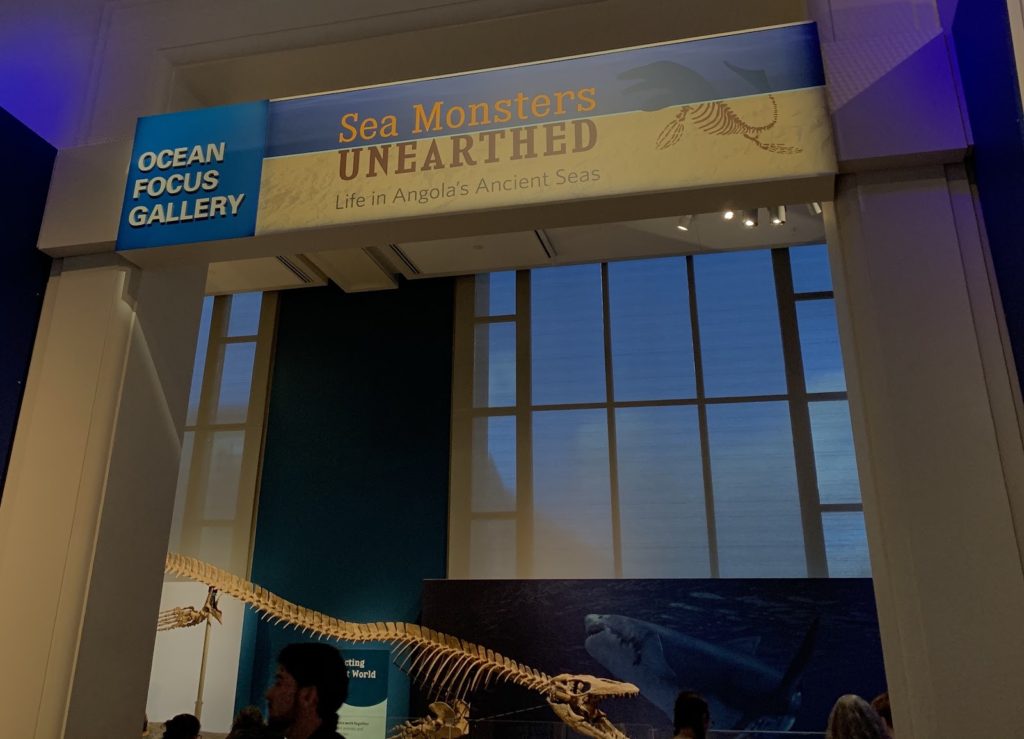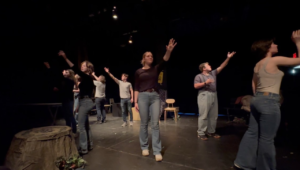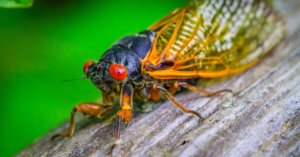A Glimpse into the Life of Angola’s Ancient Seas

Image courtesy of Regina Vahey
By Regina Vahey
The air was buzzed this weekend at the National Museum of Natural History as hundreds of wide-eyed, curious patrons of all ages admired features of the natural world. One of the museum’s newest exhibits,“Sea Monsters Unearthed: Life in Angola’s Ancient Seas,” showcased the fossils of giant reptiles that used to roam the waters of Angola. The exhibit was located in the museum’s Ocean Focus Gallery and is on display until next year.
When visitors first walk into the exhibit at the end of Ocean Hall, they get a look at the enormous fossil reconstruction of the mosasaur from Angola. Turning left to look at the beginning of the story of how the mosasaur was discovered, the first informational panel explains how the separation of South America and Africa 134 million years ago created the perfect environment for upwelling along Angola’s newly-formed coastline. Upwelling pulled the nutrient-filled water from the deepest parts of the ocean to the surface which attracted new creatures like mosasaurs, sea turtles, and plesiosaurs.
As visitors make their way around to the next panels, they learn about the way these sea-bound fossils made their way to the cliffs of Angola. Uplift, or the natural forces of the Earth’s surface raising the crust, brought the fossils out of the water and erosion exposed them to archaeologists. In 2005, Projecto PaleoAngola began as a paleontological and geological project focused on the effects of the transformation of the South Atlantic Ocean on life. Since its inception, the project has discovered clues about the ecosystems of extinct animals.
The next section of the exhibit displayed a skull of an Angolachelys mbaxi from the oldest species of sea turtle in the South Atlantic. Adjacent to the sea turtle skull was the collection of a mosasaur’s skull, vertebrae, and front limb. Mosasaurs are related to lizards and were roaming the oceans, shallow inland seas, and coastal shelves about 98 million years ago. About 66 million years ago, an asteroid wiped out mosasaurs as well as dinosaurs and many other species.
As the focal point of the exhibit, the rest of the informational panels focus on the mosasaur. The deconstructed skull of a mosasaur provides some insight into their diet and how they ate. Their long, slender skulls with pointed narrow teeth are signs that mosasaurs were fish-eaters like modern-day dolphins. In this section, there is a jaw cast of the mosasaur for visitors to be able to interact with the sea monster’s teeth. Other mosasaurs teeth were blunt and rounded which aided their consumption of hard-shelled prey like oysters. Surprisingly, some mosasaurs also preyed on each other for food.
Moving on to the centerpiece, the reconstruction of the mosasaur, Prognathodon kianda, which lived 72 million years ago in Bentiaba, Angola. This type of mosasaur was named after the ruler of the ocean in Angolan mythology. A labeled diagram of the creature explained the features of the mosasaur that helped them adapt to life underwater as their species originated as land reptiles. Some characteristics that make mosasaurs different than other sea creatures include a lower spine and tail that undulated side to side and nostrils at the top of the snout to make it easier for the mosasaur to breathe at the surface of the water.
The final piece in this exhibit shows other various sea creatures that wade the waters off of Angola today. A part of this section features a reconstructed skeleton cast of a 72 million-year-old sea turtle. Modern-day sea turtles are actually a different species than Angola’s ancient sea turtles, but many of their features show a strong resemblance.
This temporary exhibit is a comprehensive glimpse into the life of the waters of ancient Angola. Walking through the steps of the fossil formation, discovery, and reconstruction of a creature as large and detailed as the mosasaur is an awe-inspiring feat. Overall, the bite-size information makes the exhibit digestible for any person who is curious about fossils, sea creatures, or impressive archaeological accomplishments.







